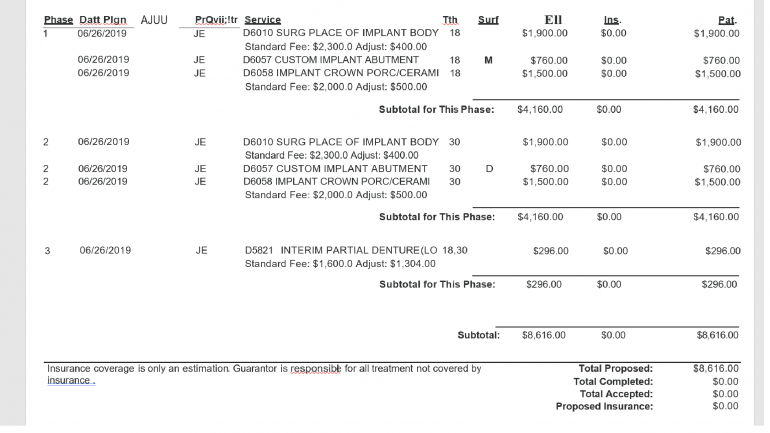
Dental Code D0480: Accession of exfoliative cytologic smears, microscopic examination, preparation and transmission of written report
Dental Code D0480 refers to the procedure of accessing exfoliative cytologic smears, conducting a microscopic examination, preparing the necessary reports, and transmitting them. This code is an essential component of oral health diagnostics, allowing dental professionals to assess cellular changes in oral tissues.
What does Dental Code D0480 mean?
Dental Code D0480 represents the accession of exfoliative cytologic smears, which involves collecting samples of oral cells from the patient's oral cavity. These samples are then subjected to microscopic examination, and a written report is prepared based on the findings. The purpose of this procedure is to identify any abnormal cellular changes, such as precancerous or cancerous lesions, viral infections, or other oral pathologies.
Patient Preparation and Education
Before initiating the procedure, the dental professional will ensure that the patient understands the purpose and importance of the exfoliative cytologic smear. The patient will be informed about the need for sample collection, microscopic examination, and the subsequent written report. Any questions or concerns raised by the patient will be addressed at this stage. Additionally, the dental professional may provide instructions to the patient regarding any necessary pre-procedure preparations, such as refraining from eating or drinking for a certain period before the appointment. Patient cooperation and understanding are key to obtaining accurate and reliable exfoliative cytologic smear samples, thus contributing to the effectiveness of the diagnostic process.
Sample Collection
During this step, the dental professional will collect exfoliative cytologic smears from the patient's oral cavity. This is typically done using a special brush, spatula, or swab. The collection process involves gently scraping or brushing the targeted areas, such as the oral mucosa, tongue, cheeks, or gums, to obtain cellular samples. The collected samples may also include cells from specific areas of concern, such as suspicious lesions or areas exhibiting abnormal tissue changes. This targeted approach helps to increase the diagnostic accuracy by focusing on areas that may have a higher likelihood of exhibiting cellular abnormalities. The dental professional will ensure proper technique and gentle handling during sample collection to minimize discomfort for the patient while obtaining adequate cellular material for analysis.
Sample Preparation
Once the samples are collected, they are transferred onto a glass slide or other appropriate containers for further processing. The samples may be fixed with a fixative solution to preserve the cellular morphology and prevent degradation. Proper labeling of the samples with patient information is crucial for accurate identification and traceability. After fixation, the samples may undergo additional processing steps, such as staining techniques, to enhance the visualization of cellular structures under the microscope. These staining methods can highlight specific cellular components or abnormalities, aiding in the identification and interpretation of the cytologic findings. The prepared slides are then carefully examined by a dental pathologist or cytologist, who analyzes the cellular morphology to provide an accurate assessment of any pathological changes present in the sample.
Microscopic Examination
After preparation, the samples are subjected to microscopic examination. A trained and experienced dental pathologist or cytologist will analyze the cellular morphology using a microscope. This examination allows for the identification of any abnormal cellular changes, such as dysplasia, inflammation, or signs of malignancy. During the microscopic examination, the dental pathologist or cytologist may utilize various magnifications and imaging techniques to thoroughly evaluate the cellular features and detect any subtle abnormalities. They may also compare the observed cellular characteristics with reference standards to ensure accurate interpretation. The microscopic examination is a crucial step in the diagnostic process, providing valuable insights into the patient's oral health status and guiding further treatment decisions.
Written Report Preparation
Based on the microscopic examination findings, a detailed written report is prepared. The report includes a description of the observed cellular changes, any potential diagnoses, and recommendations for further evaluation or treatment if necessary. The report should be concise, accurate, and adhere to the standard protocols and guidelines for reporting cytologic findings.
Report Transmission
Once the written report is prepared, it is transmitted to the referring dental professional or healthcare provider. Depending on the established communication channels, the report may be sent electronically or in a printed format. Timely transmission of the report ensures prompt diagnosis and appropriate management of any identified oral pathology.
Summary of Dental Code D0480
Dental Code D0480 is a crucial dental diagnostic procedure that involves the accession of exfoliative cytologic smears, microscopic examination, preparation of a written report, and its subsequent transmission. This procedure allows dental professionals to identify cellular changes in oral tissues, aiding in the early detection of potentially malignant or abnormal lesions. By following a systematic approach, including patient education, sample collection, preparation, microscopic examination, report preparation, and transmission, dental practitioners can ensure accurate diagnosis and appropriate treatment planning. Dental Code D0480 plays a significant role in enhancing the overall oral health management and patient care in dental practice.
Supercharge your budget with Dr. BestPrice! Expertly compare dental expenses, make wise choices, and prioritize your oral health without denting your financial stability.
